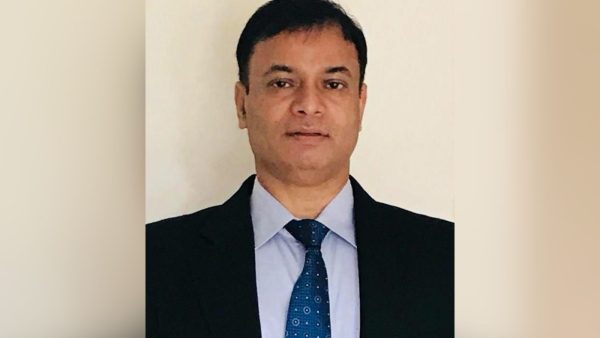Encrypted chats to crypto wallets: how teens are running organised crime under the shield of juvenile law | Chandigarh News
I have spent over three decades in Indian policing. I have chased drug peddlers through sugarcane fields, tracked extortion calls across state borders, and watched schoolboys morph into contract killers before turning 18. One truth stands out: crime is no longer an adult domain.
Today’s teenagers aren’t just joining gangs— they are running them. Not in back alleys, but on encrypted Signal groups. Not wielding daggers, but SIM boxes and crypto wallets. These are not lost children; they are boys with a plan, often more tech-savvy than their adult handlers. They understand jurisdictional loopholes. They know the police hesitate when the accused is seventeen and five months old. And they exploit that hesitation to the fullest.
The real danger is not just the evolution of juvenile crime — it is our collective denial. We refuse to accept that a child can commit a crime with full knowledge and criminal intent. We call them “misguided” and place them in observation homes for counselling. By the time we realise they were already embedded in a murder syndicate, they have escaped, crossed borders, and are operating from another time zone.
I’ve seen this play out more than once.
It often begins innocently enough. A minor is caught collecting extortion money — first offence, clean record. We send him to a juvenile justice board. He gets counselling, some supervision, and goes home. Months later, his voice surfaces in an audio clip demanding Rs 20 lakh from a trader. Then he vanishes. When his associate is caught, we discover that the “boy” is giving orders from abroad. He is barely twenty, travelling on a fake passport, and runs a cell of shooters for hire. Our earlier leniency only fuelled his confidence.
 This is about premeditated murder, organised extortion, coordinated violence. When the crime is adult, the response must be too. (Express Photo)
This is about premeditated murder, organised extortion, coordinated violence. When the crime is adult, the response must be too. (Express Photo)
Organised syndicates gaming the law
Our laws, designed to shield children from harsh systems, are now being gamed by organised crime. Networks deliberately push minors into frontline roles — mules, couriers, lookouts, even hitmen — because they know the consequences are minimal. A juvenile in conflict with the law is treated as someone to be rehabilitated, not a threat.
The intent is noble. But the ground reality has changed.
Story continues below this ad
India’s Juvenile Justice (Care and Protection of Children) Act allows for 16- to 18-year-olds to be tried as adults for heinous offences like murder, rape, and terrorism. But the process is slow, and often derailed by the belief that “a child must be saved.”
Globally, this is not unique to India. Sweden is battling a surge in gang shootings involving 14- and 15-year-olds. Brazil’s and Mexico’s drug cartels have long used children as assassins. It is simple: minors are cheap, loyal, and face light sentences. In the UK and the US, legal provisions allow minors to be transferred to adult courts for serious crimes.
Contrast that with India, where even repeat violent offenders rarely spend more than three years in a correctional facility — often under-resourced, poorly guarded, and ill-equipped to handle hardened criminals. In some cases, teenagers continue to run gang operations from inside.
And this is the digital age. A seventeen-year-old doesn’t need territory — just a smartphone, a VPN, and audacity. That is enough to coordinate a killing, circulate a hit list, or extort a garment exporter in Ludhiana while sitting in Lisbon. This is enterprise crime; some of its sharpest operators are underage.
Need for a stronger hand
Story continues below this ad
We must ask: is our legal and moral framework equipped for the modern adolescent criminal?
We already recognise early maturity in other domains — 16-year-olds can drive, marry under certain customs, and work full-time jobs. In some countries, they can vote. Yet when the same 16-year-old orchestrates a killing, we hide behind laws.
This is not about schoolyard fights or impulsive thefts. This is about premeditated murder, organised extortion, coordinated violence. When the crime is adult, the response must be too.
The answer is not to dump every teenage offender into an adult prison. But a stronger hand, and, in some cases, adult prosecution is needed for repeat offenders linked to gangs.
Story continues below this ad
Deterrence matters. Right now, young recruits know the system will go soft on them, giving gangs a free pass to keep using adolescents. The only way to break the cycle is to make it clear that age is not a shield when the crime is planned, repeated, and violent.
I have sat across many such boys. Some were scared. Others were smug. But most were fully aware of their actions and stakes.
Vanishing line between teen, don
Reform must go beyond legislation. Police need training to spot early signs of hardened juvenile offenders. Juvenile boards must decide faster on transferring heinous cases to adult courts. Correctional homes must become secure rehabilitation spaces, not halfway houses for rejoining gang life.
And society — families, schools, communities — must stop pretending that every armed teenager is just a misguided soul.
Story continues below this ad
This is not a war against children. It’s a defence of society, including its children, from being used as pawns in a much larger criminal enterprise. If we don’t act now, the line between the teenager and the don will vanish.
And when that happens, even the law will not know who it is really protecting.
O P Singh, Director General of Police (DGP), heads the Haryana State Narcotics Control Bureau.
